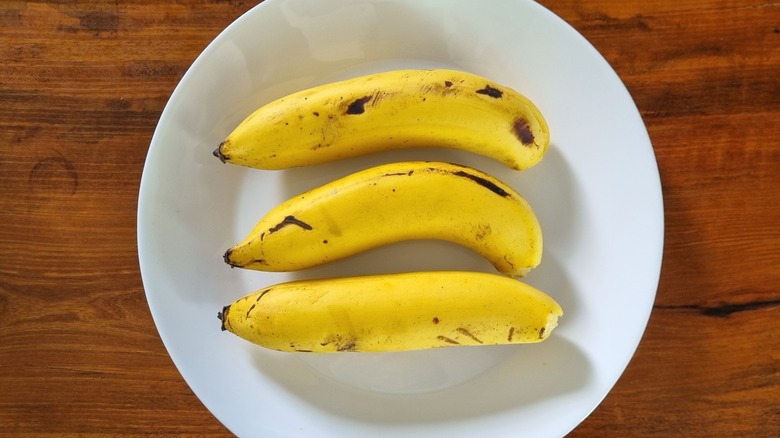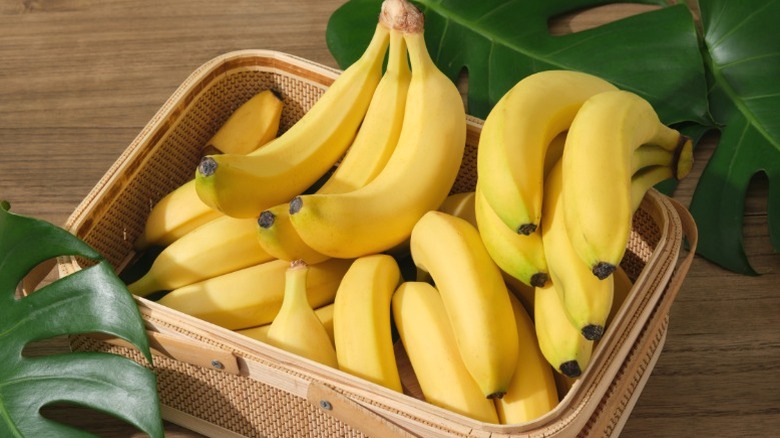Why Gros Michel Bananas Never Made A Comeback
Those of you who have played the hit game "Balatro" probably know the story of Gros Michel and Cavendish, even if you've never actually read about it as such. For those who haven't spent hours playing, there is a Joker (or power-up) called Gros Michel, which provides a small boost with the caveat that there is a 1 in 6 chance of the power-up destroying itself at the end of each round. But if it does "go extinct," fear not: That allows you to buy Cavendish, a significantly more powerful Joker with a much lower chance of self-destruction.
This reflects the story of the real-life Gros Michel bananas. Originally the dominant banana cultivar, it was decimated by disease, allowing Cavendish to become, well, the top banana. And yet Gros Michel (or "Big Mike", as it's known to its friends) is not quite extinct. However, for a number of reasons, it is much more rare than it once was.
The Gros Michel cultivar was originally grown in Martinique, a French colony in the Caribbean, before spreading elsewhere throughout the 19th century. It soon became the most popular banana in the world — when people in ice cream parlors enjoyed banana splits (well before Dairy Queen's Banana Split Blizzard), or when someone in a movie took a pratfall on a banana peel, they were eating (and/or slipping on) a Gros Michel. But everything changed with the arrival of Panama disease.
Gros Michel was devastated by a fungal disease
A wilting disease caused by a certain kind of fungus, Panama disease caused immense damage to the Gros Michel throughout the first half of the 20th century. It was responsible for shortages as early as the 1920s (in fact, the song "Yes! We Have No Bananas" is about one such outbreak), and eventually the problem progressed to the point where banana producers cut bait and switched to another cultivar: The Cavendish. While just about everyone agreed that it didn't taste as good as the Gros Michel, it was good enough for a crisis, and the switch stuck. (Nowadays, Cavendish is also threatened by Panama disease, and may one day face the same fate as the Gros Michel.)
As we said earlier, Gros Michel hasn't been completely eradicated. There are plenty of places that still grow the cultivar, although they use different names for it; in Cuba and Puerto Rico, it's called Johnson bananas, while in Hawaii, it's known as Bluefields bananas. In any case, the biggest growers, like Dole or Del Monte, don't sell them, which means they're prohibitively difficult to find for most people, and quite expensive in any case. A "small box" of Gros Michel will set you back almost $130. That means if you want to make some banana bread or super-moist hummingbird cake, it's probably best to stick with Cavendish.

